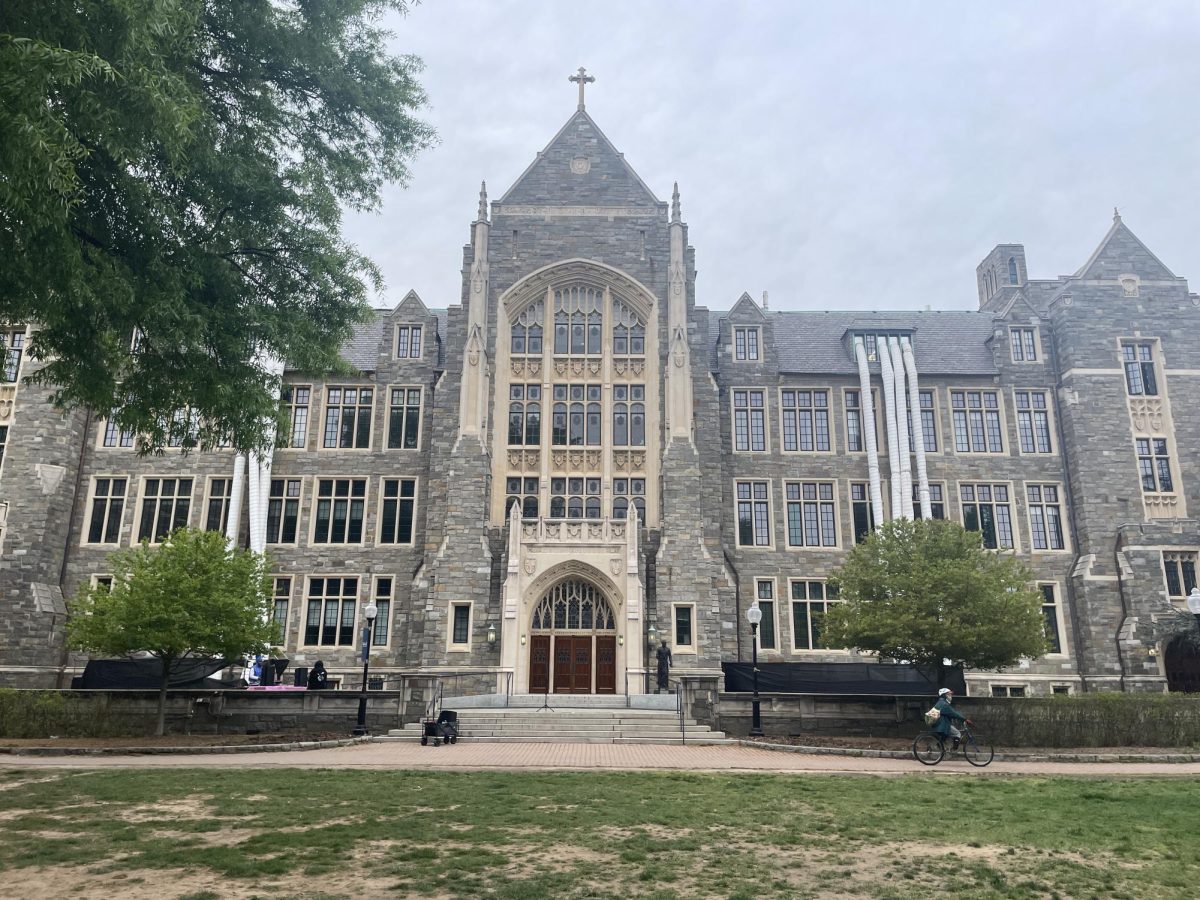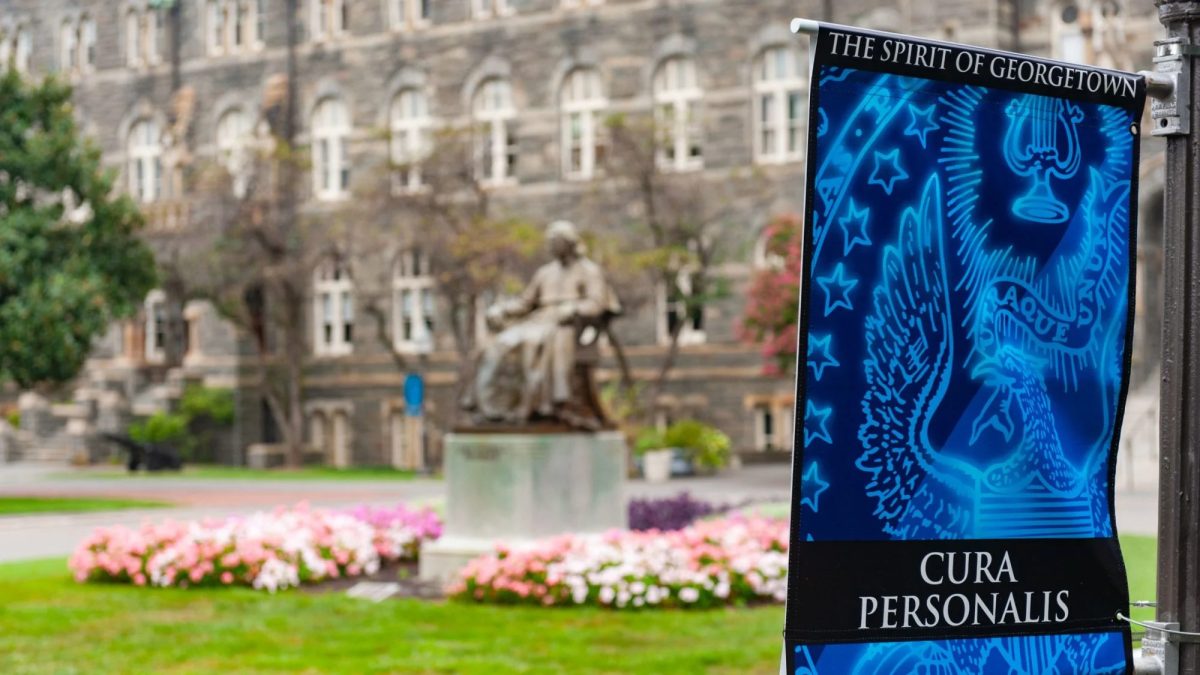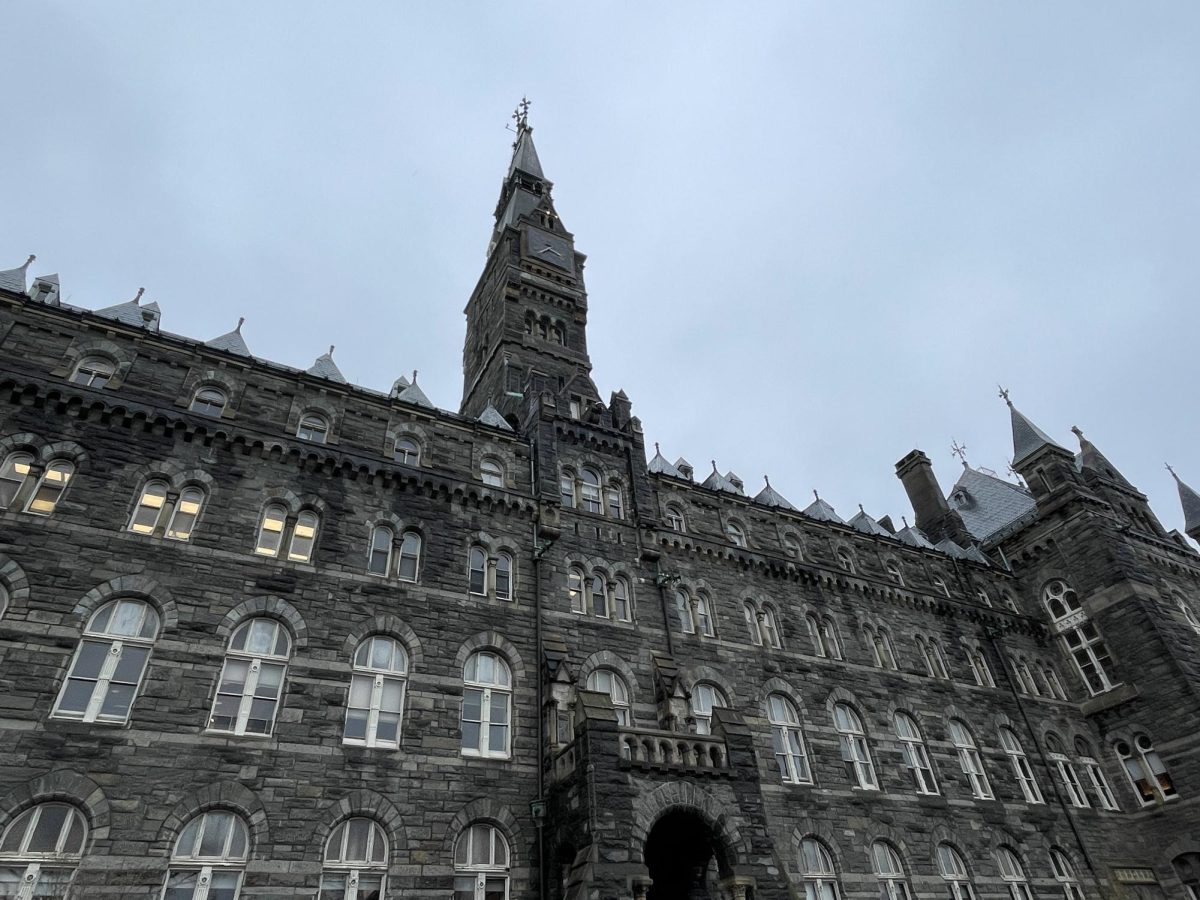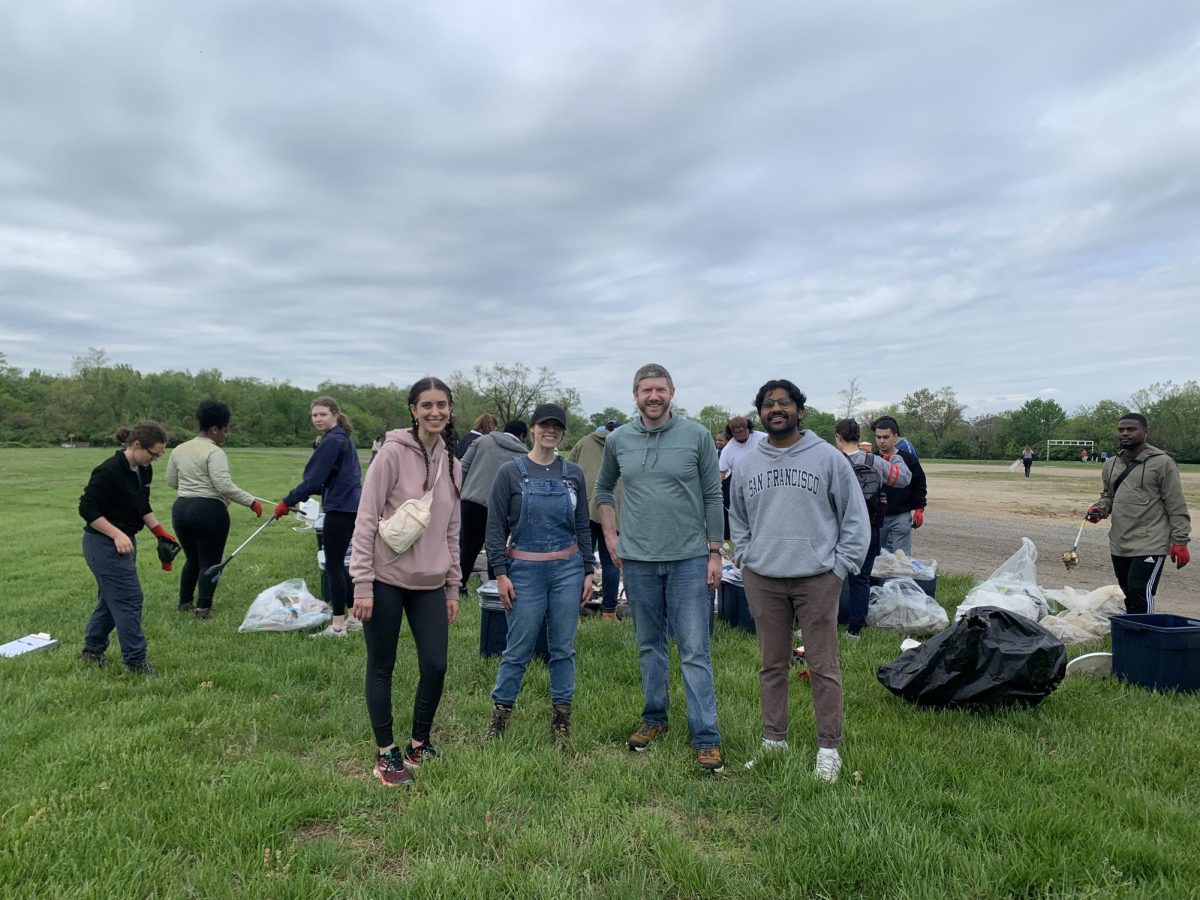
A student-led initiative, Smoke Free Georgetown has launched a Facebook page and petition to ask for a studentwide referendum on banning smoking on campus.
A new student-led group advocating for a smoke-free campus is petitioning the Georgetown University Student Association to hold a studentwide referendum on banning smoking on campus.
Smoke Free Georgetown, which is led by Mac Williams (NHS ’17) and GUSA Senator Henry Callander (COL ’18), launched its petition and Facebook page Tuesday. The campaign is independent from GUSA.
The group hopes the petition will encourage the university to hold a referendum, according to Callander.
“The main purpose behind the petition is to hold a referendum. The idea is that we’re just kind of trying to gauge what students feel about the matter and the issue,” Callander said. “If the student body believes that it’s the right course of action through a referendum, then that’s the course, hopefully, the university will take.”
GUSA Vice President Chris Fisk (COL ’17) said a referendum on the issue will only be held if it passes a GUSA senate vote.
“The senate will vote on whether or not to have a referendum if either a) a senator introduces the topic and calls for a vote, or b) if a petition to call for a referendum reaches 300 signatures,” Fisk wrote in an email to The Hoya.
Currently, university regulations prohibit smoking in any indoor spaces. Smoking is only permitted in designated areas, which have to be away from entrances to minimize the change of secondhand smoke.
The Georgetown University Medical School campus implemented a full ban on smoking in 2014.
In April 2014, students launched a similar petition to make the main campus smoke-free.
However, the Smoke Free Georgetown campaign aims to achieve a complete smoking ban on Georgetown’s main campus. Callander said this would be the best solution and would match Georgetown’s policies with those of many other universities.
Other universities, including Harvard University and The George Washington University, have already implemented complete bans on smoking. Sixty-five percent of schools ban smoking completely, according to Williams.
As of Oct. 1 this year there are 1,713 college campuses in the country with comprehensive bans on smoking, according to anti-smoking advocacy group Americans for Nonsmokers’ Rights.
This grew from the 446 smoke-free campuses in October 2010.
“For now, we’ve been talking about going 100 percent smoke-free,” Callander said. “That would be the most effective approach, and that’s what other peer institutions have done. So, we want to follow suit and do the exact same thing.”
As of 2:30 a.m., the Facebook page had amassed 255 likes. Callander and Williams declined to disclose the number of signatures on the petition so far.
Williams said the group was motivated to bring Georgetown in line with peer institutions to create a healthier campus.
“The initiative was started to try and bring Georgetown in line with our peer institutions with the ultimate goal of improving the health of our students, faculty and visitors of campus,” Williams said.
A 2012 surgeon general’s report on tobacco use said secondhand smoking is linked to fetal abnormalities and can exacerbate asthma and pre-existing lung conditions.
GUSA has not been made formally aware of the group’s goal of a smoke-free campus, according to Fisk, but it is willing to take the necessary steps to address the issue if the student body desires.
“The topic of a smoke free campus has not been something formally brought to us, but if students care about it and want to make it a priority, we’ll respond accordingly,” Fisk wrote.
GUSA Senator At-Large Scott Lowder (COL ’17) said he is in favor of a campuswide ban on smoking because secondhand smoke can adversely affect students with health issues.
Lowder said his own experience with asthma has made him aware of the public health issue smoking poses.
“I do believe smoking shouldn’t be on campus. I think the overriding concern should always be the health of the students, especially as a student who suffers from asthma and has actually gotten asthma attacks from direct exposure to secondhand smoke,” Lowder said.
Smoking is a common concern for prospective parents, according to Williams. Williams, who is a Blue and Gray Society tour guide, said many parents of prospective students expressed their concern at the amount of smokers on campus.
For Williams, the personal inspiration for Smoke Free Georgetown was the desire to improve his own health and that of other students on campus.
“I started thinking about this my sophomore year, but I’m also a tour guide. All the time I get questions from parents asking ‘Why do I see people smoking on campus?’” Williams said. “It’s something that’s important to me. My health and the health of my peers is very important to me.”
Callander said Georgetown should emulate other universities in banning smoking and promoting the health of students.
“The entire [Univeristy of California] system and [California State University] system already consists of about 30 to 40 schools. They all went 100 percent smoke-free in 2013 and 2014. You see these public schools have this trend of doing this because this is a very positive initiative,” Callander said. “So we want to take ourselves to the same spot.”
Smoke Free Georgetown aims to allow students with concerns about smoking on campus to express their views on whether smoking should be allowed on campus, according to Callander.
“We leave it up to the student body. We’re literally the messengers and we want the students to be the push. It’s not our place to do it,” Callander said.



















MSB09 • Nov 1, 2016 at 11:41 am
And where will the smokers go?
Do you children even stop to wonder what effect your heavy-handed bans and rules will have on people who are addicted to smoking and can’t stop just because you stamped your feet and told them it was icky?
Jon • Oct 12, 2016 at 11:14 pm
https://www.youtube.com/watch?v=7irpYBBFTJc
Henry Callander pushed this same agenda at Chapman University. Watch this video made in protest of the shady dealings behind the ban.
Hilton • Oct 8, 2016 at 12:02 pm
oh get a grip. why do these children need to try to prove their virtue by trying to pass these crap rules. leave my ciggies alone
danielhammond • Oct 8, 2016 at 11:02 am
OSHA also took on the passive smoking fraud and this is what came of it:
Reference Manual on Scientific Evidence: Third Edition
This sorta says it all
These limits generally are based on assessments of health risk and calculations of concentrations that are associated with what the regulators believe to be negligibly small risks. The calculations are made after first identifying the total dose of a chemical that is safe (poses a negligible risk) and then determining the concentration of that chemical in the medium of concern that should not be exceeded if exposed individuals (typically those at the high end of media contact) are not to incur a dose greater than the safe one.
So OSHA standards are what is the guideline for what is acceptable ”SAFE LEVELS”
OSHA SAFE LEVELS
All this is in a small sealed room 9×20 and must occur in ONE HOUR.
For Benzo[a]pyrene, 222,000 cigarettes.
“For Acetone, 118,000 cigarettes.
“Toluene would require 50,000 packs of simultaneously smoldering cigarettes.
Acetaldehyde or Hydrazine, more than 14,000 smokers would need to light up.
“For Hydroquinone, “only” 1250 cigarettes.
For arsenic 2 million 500,000 smokers at one time.
The same number of cigarettes required for the other so called chemicals in shs/ets will have the same outcomes.
So, OSHA finally makes a statement on shs/ets :
Field studies of environmental tobacco smoke indicate that under normal conditions, the components in tobacco smoke are diluted below existing Permissible Exposure Levels (PELS.) as referenced in the Air Contaminant Standard (29 CFR 1910.1000)…It would be very rare to find a workplace with so much smoking that any individual PEL would be exceeded.” -Letter From Greg Watchman, Acting Sec’y, OSHA.
Why are their any smoking bans at all they have absolutely no validity to the courts or to science!
danielhammond • Oct 8, 2016 at 11:02 am
Clean Air Quality Law.
It is hereby ordered that all things that generate chemical releases simular in nature to tobacco smoke are hereby OUTLAWED.
1. Automobiles and gas or diesel engines or any other contivance that emits chemcial releases. This savings equals to the public not being forced to inhale 100s of billions of cigarettes each day.
2. All plants are outlawed as they releases tons daily of the Carcinogen ISOPRENE. Equal in volumes of Millions of cigarettes each day.
3. Restaraunts will be outlawed from preparing any cooked foods as these release 100s of millions of equal cigarettes each day.
4. In home cooking is also outlawed as it produces upwards of 10s of thousands of equal cigarettes inside and outside the home.
5. Outdoor cookouts and fireworks are outlawed as they releases 100s of millions of equivalent cigarettes a day or on weekends in the yards and parks of our city.
6. Humans are hereby outlawed from existence insode the city limits as their own human breath contains hundreds of the same chemicals as found in tobacco smoke!
7. Nature itself is outlawed as it generates Billions of chemcial releases naturally into the atmosphere a day hense posing a threat to human life.
8. This Clean air law becomes effective Immediately.
9. Your preference of suicide is a personal choise,Police will write tickets and lock up any survivors after this law becomes effective. A grace period of 30 days will be in place to educate the public on its existence.
Signed into law by the GHOSTOWN ADMINISTRATION
The Ghost Town Administration has just learned that all these chemicals found in tobacco smoke are natural to the earth and that mankind also evolved within this filth ridden air!
Therefore all Tobacco Control Measures are here by OUTLAWED as for being contrived JUNK SCIENCE!